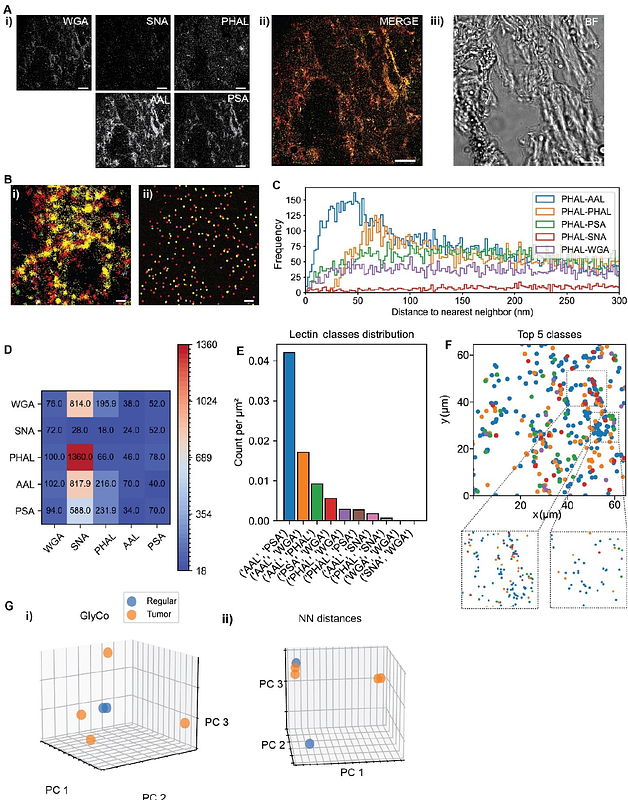Glycan Atlassing: Nanoscale analysis of glycocalyx architecture enables functional tracing of cell state

Glycan Atlassing: Nanoscale analysis of glycocalyx architecture enables functional tracing of cell state
Joseph, D. M.; Yurekli, N.; Fritsche, S.; Hashem, R.; Thoma, O.-M.; Larafa, I.; Boric, T.; Bielawski, C.; Almahayni, K.; Franze, K.; Waldner, M. J.; Moeckl, L.
AbstractThe glycocalyx is a complex layer of glycosylated biomolecules surrounding all cells in the human body. It is involved in the regulation of critical cellular processes such as immune response modulation, cell adhesion, and host-pathogen interactions. Despite these insights, the functional relationship between glycocalyx architecture and cellular state has remained elusive so far, mainly attributable to the structural diversity of glycocalyx constituents and their nanoscale organization. Here, we show that DNA-tagged lectin labeling and metabolic oligosaccharide engineering enables multiplexed super-resolution microscopy of glycocalyx constituents, yielding an atlas of glycocalyx architecture with nanometer resolution. Quantitative analysis of the obtained nanoscale map of glycocalyx constituents facilitates the extraction of characteristic spatial relationships that accurately report on cellular state. We demonstrate the capacity of our approach, which we term Glycan Atlassing, across cell and tissue types, ranging from cultured cell lines to primary immune cells, neurons, and primary patient tissue. Glycan Atlassing establishes a powerful strategy for investigating glycocalyx remodeling in development and disease, potentially enabling the development of new glycocalyx-centered targets in diagnosis and therapy.